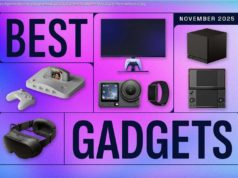Microsoft’s first product showed the way to reshape the company’s future.
When Satya Nadella became CEO of Microsoft in 2014 he asked a big question: why did the company need to exist?
Microsoft had for decades held onto a clear vision: to put a Windows PC on every desk. But long before he took the top job, this mission was largely accomplished (and increasingly less relevant in a world of smartphones and cloud computing). So the question was, what to do next?
«When I joined Microsoft in 1992, we used to talk about a PC in every home and on every desk as our mission. It was tangible, clear, succinct and very empowering because it was clear what the company was for and what we were trying to get done,» said Nadella, speaking in London last week.
«Even by the late 90s, at least in the developed world, we had achieved that and after that it was a bit unclear: what is our purpose? So that’s why I thought it was important for me in 2014 to ask the question, the existential question: why does Microsoft exist? And then try to answer it crisply for myself and all of us.»
Perhaps unexpectedly, Nadella said to get that answer he went back to the very first product that Microsoft created, a Basic interpreter for the Altair 8800 .
«And right there is everything about who we are, which is: we create technology so others can create technology,» he said.
«Empowering people and organisations all over the planet to achieve more. Every one of those is a key word for us. It’s not about our technology, it’s about what other people can do with our technology.»
«I wanted us to get back to that sense of purpose. A lot has happened since the Altair, we can’t say ‘let’s get back to the roots and build a Basic interpreter for the Altair’, but [for] the quantum computer, we can build the development tools,» he said.
Changing the famously hard-charging culture at Microsoft has not been easy, he acknowledges. For example he had to introduce a book on ‘non-violent’ communication to Microsoft’s leadership team as a way to encourage them to communicate better.
Part of the problem was that the executives had previously been sent on a course about asking ‘precision questions’.
«The idea was to destroy anybody’s idea in the first five minutes by asking these highly precise analytical questions to disrupt the speaker’s hypothesis. Which is actually a very useful analytical tool to have, but it was being used as an instrument of offence,» Natella said.
«So this is one of the reasons I said that if we are going to be an effective leadership team, we will have to practice this non-violent communication.»
Instead, Nadella wants to creating a ‘growth mindset’ in the company culture, despite the considerable cynicism around such projects.
«There was a private equity guy who once told me ‘The only culture I like is in my youghurt’. [But] if you don’t recognise that culture is the ingredient that you need in order to drive your top line and bottom line, I think you’ll think more clearly after your first success,» he said, but admitted: «One of my biggest worries of this book and even talking about is will it be viewed cynically as just corporate propaganda.»
Nadella is also a big believer in the use of empathy in business, arguing it can create a better understanding of what customers really need. He was in London promoting his book Hit Refresh, about his attempt to ‘rediscover Microsoft’s soul’.
«When I think about our business, at the core of it we have to drive innovation that meets the unmet, unarticulated needs of customers. That’s it. If you want to be able to achieve business success you’ve got to get that right,» he said.
«You can’t just say ‘We’ll listen to customers and do what they ask us to do’ because that’s not what they really want you to do. They want you to get beyond their words and get in touch with their real needs. That requires in my opinion the deepest sense of empathy. Now the real challenge is, you can’t go to work and say ‘let me switch on that empathy button and be great at business’.»
In terms of technology, Nadella said that augmented reality, artificial intelligence and quantum computing will be key areas of focus.
«Mixed reality is the ultimate computer or computing experience. Your field of view is the combination of analogue and digital.»
«That’s the world we are going towards when we talk about the early forms of virtual reality: augmented reality — that’s why we think of it as mixed reality. It’s a dial which you will be able to turn: ‘I want to be fully immersed in something’ or ‘I want to see the real world with artificial objects’, so we are building towards it.»
«I think it will change collaboration, it will change commerce, it will change the notion of what presence is. Design and collaboration are being fundamentally transformed,» Nadella added.
Nadella said that mixed reality and AI are still in their early stages, while quantum computing is still at the research stage. But he added: «What is going to be key for us as a company is to take these three technologies and apply them with our sense of purpose: how do we go and solve some of the pressing problems of the world? That’s how I feel about technology and our purpose.»
Microsoft’s Nadella talks hardware and Windows
CEO Satya Nadella says Windows continues to be a very significant part of Microsoft but it’s not the only part.
Microsoft’s Nadella: ‘We’ll make more phones. But they won’t look like today’s devices’
So don’t hold your breath if you’re a fan of the rumored Surface phone.
Домой
United States
USA — software Why does Microsoft exist? How CEO Satya Nadella answered the tech giant's...






